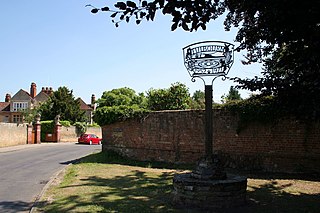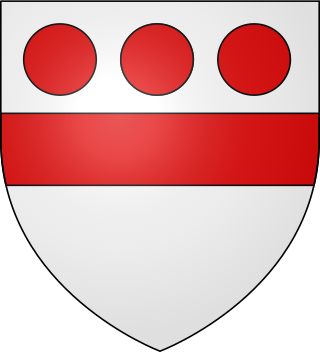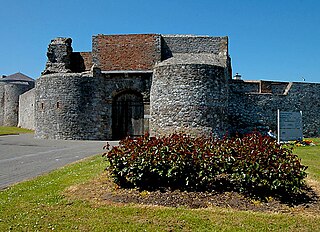
The Barons of the Exchequer, or barones scaccarii, were the judges of the English court known as the Exchequer of Pleas. The Barons consisted of a Chief Baron of the Exchequer and several puisne (inferior) barons. When Robert Shute was appointed second baron in June 1579 the patent declared "he shall be reputed and be of the same order, rank, estimation, dignity and pre-eminence to all intents and purposes as any puisne judge of either of the two other courts." The rise of commercial trade in Elizabethan England occasioned fraudulent application of the Quo minus writ. More taxation demanded staff at the exchequer to sift an increase in the case load causing more widespread litigation cases to come to the court. From the 1580s onwards the Barons of Exchequer were no longer held in such low regard, and more likely to be Serjeants-at-law before qualification. The Inns of Courts began to exclude solicitors, and held posts for judges and barons open equally to barristers. In 1591, Regulations reflected a case in which the Lord Keeper Egerton banned solicitors from seeking cases in the Exchequer.
Fromund le Brun was a cleric and judge in thirteenth-century Ireland who became Lord Chancellor of Ireland. He lost a long battle to become Archbishop of Dublin, due largely to his notorious pluralism. He also clashed bitterly with the formidable Archbishop of Cashel, David Mac Cerbaill, who excommunicated him.

Walter de Fulburn, or de Fulbourn was a leading English-born statesman and cleric in medieval Ireland, who held the offices of Bishop of Waterford, Bishop of Meath and Lord Chancellor of Ireland
The High Sheriff of County Waterford was the Sovereign's judicial representative in County Waterford. Initially, an office for a lifetime, assigned by the Sovereign, the High Sheriff became an annual appointment following the Provisions of Oxford in 1258. Besides his judicial importance, the sheriff had ceremonial and administrative functions and executed High Court Writs.

The Court of Exchequer (Ireland), or the Irish Exchequer of Pleas, was one of the senior courts of common law in Ireland. It was the mirror image of the equivalent court in England. The Court of Exchequer was one of the four royal courts of justice which gave their name to the building in Dublin in which they were located, which is still called the Four Courts, and is in use as a courthouse.
Sir Robert Bagod was an Irish judge who was appointed the first Chief Justice of the Irish Common Pleas in 1276. He built Baggotrath Castle, which was the strongest fortress in Dublin: it was located on present-day Baggot Street in central Dublin. He also founded the Carmelite Friary in Dublin.
Nicholas de Balscote was an English-born official and judge in fourteenth-century Ireland. He attained high judicial office, but his career was damaged by a quarrel with King Edward II.
William de Meones was an English-born cleric and judge in fourteenth-century Ireland, who was the second Chief Baron of the Irish Exchequer. Today he is chiefly remembered for giving his name to the Dublin suburb of Rathmines.
John Keppock was an Irish judge of the late fourteenth century, who held the offices of Lord Chief Justice of Ireland, Chief Baron of the Irish Exchequer and Deputy Lord Chancellor of Ireland. He became a politician of some importance.
William de Karlell was an English-born judge, administrator and cleric in fourteenth-century Ireland. He held numerous benefices including Archdeacon of Meath and Rector of Youghal, and sat in the Irish House of Commons. After sitting for some years as a Baron of the Court of Exchequer (Ireland) he was removed from office, following a flood of complaints about his acts of extortion and oppression committed by himself and Chief Baron Holywood, but he was later restored to favour, and served briefly as Chief Baron of the Irish Exchequer. He is buried in St Canice's Cathedral, Kilkenny.
Nicholas Lumbard or Lombard was an Irish barrister and judge of the fourteenth century.

William de Bardelby was an English-born judge in Ireland.

William Devereux, Baron Devereux of Lyonshall was an English noble who was an important Marcher Lord as he held Lyonshall Castle controlling a strategically vital approach to the border of Wales in the time of Edward I and Edward II. He was the first of this family officially called to Parliament, and was ancestor to John Devereux, 1st Baron Devereux of Whitchurch Maund, the Devereux Earls of Essex, and the Devereux Viscounts of Hereford. His coat of arms was the same as his father's and described as "argent, fess and three roundels in chief gules" which passed to the descendants of his first wife, the Devereux of Bodenham; or "gules od un fesse d'argent ove turteaus d'argent en le chief" which passed to the descendants of his second wife, the Devereux of Frome.
Baron of Hendwr, in the County of Merioneth, is a dormant title in the English Baronage which was granted on 22 July 1284 to Dafydd ap Gruffydd ap Owain Brogyntyn by letters patent issued by Edward I at Caenarfon. Dafydd and his kinsmen had fought against Edward I during his Conquest of Wales and, after coming into the King's Peace, received a Royal pardon and had their lands confirmed per Baroniam. The second Baron was summoned to Quo Warranto proceedings on 7 December 1334 at Harlech to assess by what authority he claimed his title and he cited the charter granted to his father in 1284. The daughter of the 3rd Baron, Gwerful ferch Madog was the wife of Goronwy ap Tudur, and therefore 3rd great-grandmother of King Henry VII. The 4th Baron, David de Hendwr married Sibella de Cornwall, daughter and heiress of John de Cornwall, great-grandson of Richard 1st Earl of Cornwall on 8 July 1343 at Westminster Abbey.
Sir William le Deveneys was a Crown administrator and judge in late thirteenth and early fourteenth century Ireland, who served very briefly as Chief Justice of the Irish Common Pleas.

Thomas de Brayles was a senior judge and Crown official in fourteenth century England. He spent part of his career in Ireland, where he became Chancellor of the Exchequer of Ireland and a Baron of the Irish Court of Exchequer.
Sir Peter Mallore, or Mallory was a prominent landowner and local politician in fourteenth-century Northamptonshire, who also served as a judge in Ireland. His career was marked by controversy: he was imprisoned on at least two occasions, the second time for assaulting another judge. The troubles of his later years were due largely to the actions of his son Giles, who was accused of wasting the inheritance of his infant stepson and ward. Fortunately for his career, Sir Peter enjoyed the personal regard of a number of influential men, notably the Black Prince and King David II of Scotland.

Sir Walter de la Haye, or de Haye was an English-born statesman and judge in Ireland of the late thirteenth and early fourteenth centuries, who served for many years as Sheriff of County Waterford and as Chief Escheator of Ireland, and briefly as Justiciar of Ireland.
Nicholas de Clere, or le Clerk was an English-born Crown administrator in the late thirteenth-century Ireland. He was a skilled financier who achieved high Government office, becoming Lord Treasurer of Ireland, but he faced serious charges of corruption, as a result of which he was removed from office. He was ruined financially by the huge debts he owed to the Crown, and spent his last years in prison.

Richard de Soham was an English-born Crown official and judge who held high office in Ireland in the reign of King Edward I of England. He was a Baron of the Court of Exchequer (Ireland) and briefly Deputy Lord Treasurer of Ireland.